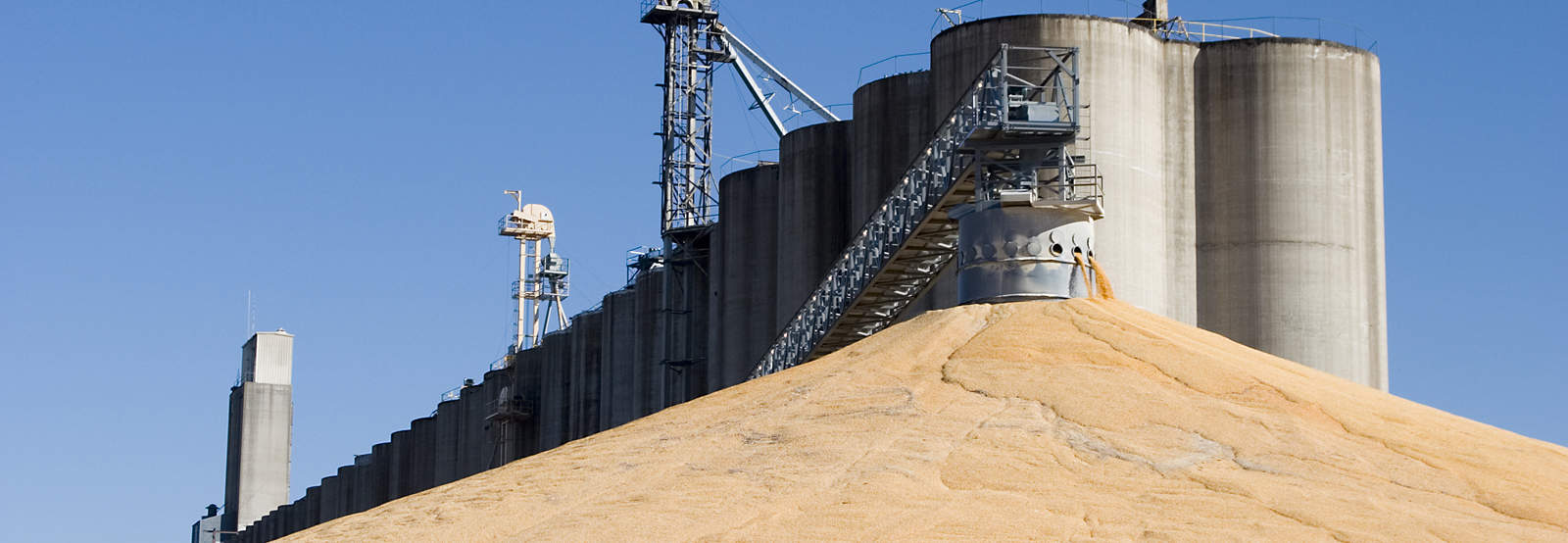
The grain and animal feed manufacturing process has always been an area of concern when it comes to combustible dust. Therefore, the NFPA has a standard specifically for this industry: NFPA 61 (Standard for the Prevention of Fires and Dust Explosions in Agricultural and Food Processing Facilities).
OSHA also highly regulates dust hazards in the animal feed processing industry. In fact, OSHA has leveled some fines higher than $1 million for recent fatal explosions in this industry.
Explosions at grain and feed mill processing plants kill several people every year and cause many explosions. Certainly, the feed manufacturer is especially prone to these accidents because their materials are often in dust form and just need an ignition source to explode.
The best way to control dust at a feed processing plant (and the way recommended by NFPA and OSHA) is with a dust collection system. However, handling all the dust in your facility is going to require a major investment… so, how do you make sure you get the best system for your money?
The key to a safe, efficient system is having it designed by a company with experience in your industry and a track record of not cutting corners. Further, a cheap system will cost you money in maintenance and attempts to fix design flaws.
ELEMENTS OF A GOOD SYSTEM DESIGN FOR FEED MANUFACTURING:
- Proper airflow through the entire system
- Correctly sized fans
- Explosion and fire protection
- Good dust containment
- Correctly sized dust collector
- Enough filter area
Let’s look at each of these to see why they’re important for you.
PROPER AIRFLOW
If air can’t move through the ductwork efficiently, then there will be places where it slows down or runs into obstructions. As a result, this causes three problems. First, it decreases your system’s efficiency and wastes fan power. Second, it slows down the air so dust can fall out and build up in the duct. Third, dust traveling through a badly designed system can cause wear and tear on the duct at bends and corners.
CORRECTLY SIZED FANS
If the fan isn’t big enough for the job, it won’t keep dust flowing through the system. Also, if air moves too slowly it won’t pick up dust at the capture points and it won’t keep it moving through the ducts. Consequently, dust built up in ductwork can cause fires.
EXPLOSION AND FIRE PROTECTION
Any dust collection system for feed manufacturing has to have proper fire protection. Some examples of this include spark traps, abort gates, explosion isolation valves, or extinguisher systems. Unfortunately, there’s no one-size-fits-all solution. An experienced system designer will help you choose the best tools to protect your facility and your employees.
GOOD DUST CONTAINMENT
It doesn’t do much good to have a dust collection system if it isn’t controlling your dust problem. Dust is probably being generated at lots of places in your animal feed processing plant. If the dust collection system isn’t capturing the dust at those spots, it will get loose. In short, nobody wants the facility to be a dusty mess, and it’s also a fire hazard.
CORRECTLY SIZED DUST COLLECTOR
It might be tempting to go for the smallest dust collector that will work for your cattle feed processing plant. Ironically, this might not save you as much money in the long run as you think. This is because an undersized system is going to require more filter changes and other maintenance. Further, if your production expands, that barely-big-enough system may not be able to keep up anymore.
ENOUGH FILTER AREA
A dust collector can’t do its job if its filters can’t function. Every type of system has an ideal air-to-cloth ratio, the amount of filter area that should be available for the air flowing through them. So if you don’t have enough filter area, your filters may get overloaded with dust and stop working. Therefore, they will need replacing more often, which costs money and time.
A dust collection system for feed manufacturing must be designed for this special application. Grain and feed manufacturing facilities like a feed hammer mill can have fine and coarse dust at different parts of the feed mill process. Most feed processing methods have many places where dust is being generated. Also, dust in this application is usually very combustible.
In conclusion, talk to an expert in dust collection system design to keep your facility and your employees safe. Our Imperial Systems professionals will make sure you get the best system for your money without cutting any corners or leaving gaps in your protection.
Read more about safety in hammer mill material handling.
